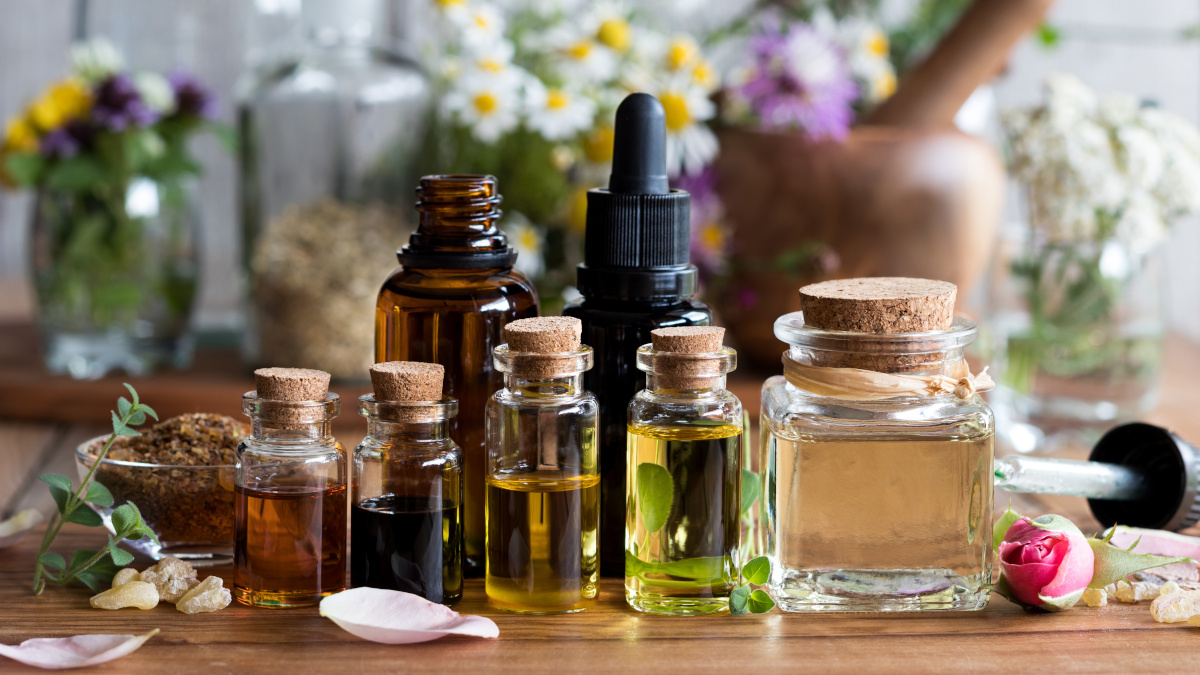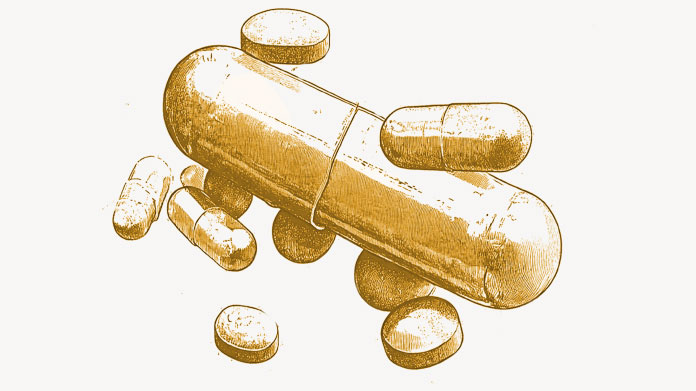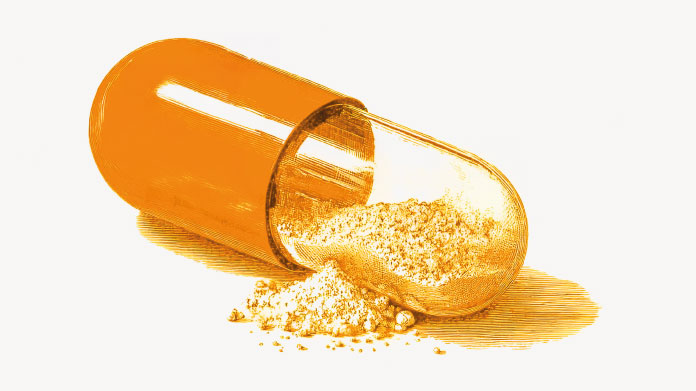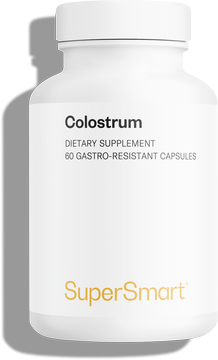Which are the 7 best essential oils?
In the area of natural medicines, aromatherapy is riding high. Here’s a list of the 7 most health-beneficial essential oils.

Recap: what is an essential oil?
An essential oil is a plant extract obtained from either a whole, or part of, an aromatic plant – its flowers, fruits, leaves, seeds, roots or bark.
There are two main methods of extracting an essential oil:
- steam distillation: here, steam is directed through plant material, vaporising its aromatic principles, and transporting them to a cooling circuit where they are condensed back into a liquid. In this process, both an aqueous condensate (a hydrosol) and an essential oil are collected;
- cold expression: this method is reserved for citrus fruit. The peel is mechanically punctured to rupture the essential oil glands and release their aromatic substances.
With various ways of administering them (topical, inhalation, oral, rectal or vaginal), essential oils can be used both singly or in synergistic combinations. Used appropriately, they can support both physical and mental health (1-2).
Given that it is the quintessence of a plant in its most concentrated form, an essential oil is a natural aid that needs to be used judiciously, especially by more vulnerable individuals (children, women who are pregnant or breastfeeding, those with epilepsy ...) (3). If you have any concerns, consult your doctor or pharmacist. Let’s now explore the 7 best essential oils to keep in your medicine cabinet.
Ravintsara, the ‘good leaf’ of winter
Essential oil of ravintsara – literally ‘good leaf’ in Madagascan – is produced by distilling the leaves of the Madagascan camphor tree (Cinnamomum camphora).
The African climate gives this laurel-like tree a specific chemical profile (or chemotype) which marks it out from other camphor trees. It is very rich in 1,8-cineole (forming around 65% of its composition) and is free from camphor, a molecule associated with neurotoxic effects.
Extremely gentle, ravintsara oil is particularly good for the respiratory system because of its decongestant properties. It also works more systemically to support the body’s defense mechanisms (4). An invaluable aid to see you through the winter months!
Oregano, aromatherapy’s superpower
If oregano leaves are the perfect accompaniment to tomatoes, its flowering tops produce an extremely powerful essential oil – or to be more precise, three, depending on the species distilled: compact oregano (Origanum compactum L.), Spanish oregano (Thymus capitatus L.) and green oregano (Origanum vulgare L. var. hirtum).
Though subtly different, all three contain a significant level of carvacrol, a phenol highly active against infection, parasites and fungi (5). With invigorating properties, they offer a substantial boost in cases of intense fatigue. They also help to support gastrointestinal function (6).
However, this Herculean strength comes with a downside: used long term, essential oil of oregano is dermocaustic and toxic for the liver. It should only be used by adults, for short periods and diluted in a plant oil. It is also available in oral form for greater efficacy (in capsules, for example, in Oil of Oregano, standardized to 40% carvacrol).
Peppermint, a refreshing essential oil
With analgesic and anaesthetic properties, essential oil of peppermint (Mentha x piperita) acts rather like a blast of cold air: its menthol and menthone content helps to counteract the sensation of pain (7). However, pure essential oil of peppermint should only be used on a tiny area: if you want to use it more extensively, always dilute it in an oily or fatty substance.
It is also popular inhaled or applied to the temples for combatting headaches (8).
In some orally-administered supplements, it is combined with other essential oils to maximise its energising potential. When combined, for example, with Chinese cinnamon, rich in aromatic aldehydes, and lemon zest, a source of monoterpenes, it offers a comprehensive, synergistic effect (this is the blend used in the formulation Organic Defense Mix, which also contains green oregano) (9-10).
Tea tree, a modulator in a vial
It was when explorer James Cook landed on Australia’s shores that he first became acquainted with the plant tea tree (Melaleuca alternifolia). Initially attracted by the freshness of its leaves in a tea, he discovered from the local population that tea tree poultices were excellent for preventing secondary wound infections. However, it was only in 1922 that chemist Arthur de Raman provided scientific evidence of its powers.
In aromatherapy, essential oil of tea tree acts as a broad-spectrum booster of the body’s own defenses, preventing foreign invaders from adhering to epithelial tissue (11). In the cosmetics world, many find its purifying properties invaluable for relieving skin problems (12).
Eucalyptus, a distilled breath of fresh air
Also originating from the land of the kangaroo, eucalyptus comes in different varieties and actually produces three distinct essential oils:
- eucalyptus radiata (Eucalyptus radiata): very popular for its decongestant properties which come from its 1,8-cineole and alpha-terpineol content, it acts more specifically on the upper respiratory tract;
- eucalyptus globulus (Eucalyptus globulus): containing, in addition, globulol, its primary effects are on the lower respiratory tract (13);
- lemon eucalyptus (Eucalyptus citriodora): this is more focused on the joints and muscles, while also offering calming properties as a result of its concentration in citronella (14).
Lavender, the jewel of relaxing essential oils
Growing at more than 1000m altitude, true lavender, also known as common or English lavender (Lavandula angustifolia) corresponds to the ‘female’ lavender. Its flowering tops produce an essential oil that’s very popular among aromatherapists for its olfactory quality, and for its ease and flexibility of use.
With a high concentration in linalool and linalyl acetate, this Provençal shrub supports relaxation and better sleep quality (15-16). Its oil can be combined with other soothing essential oils (the oral supplement Organic Relaxing Oil Blend, for example, contains a trio of organic zen essential oils – lavender, mandarin zest and caraway).
Helichrysum, for healing bruises of the body and mind
An extract of Everlasting Flower, which gets its name from its exceptional longevity, essential oil of helichrysum (Helichrysum italicum), sometimes known as Italian strawflower or curry plant, helps with all those minor knocks (bumps and bruises… ) by facilitating their resorption, as well as with improving the appearance of older scars (17). A property which also works at an emotional level as a result of its ability to mitigate psycho-emotional shocks.
Though it offers undeniable benefits, helichrysum contains a significant amount of italidione ketones, accumulation of which causes neurotoxicity. It should therefore only be used for relatively short periods (or if used longer-term, make sure you observe adequate therapeutic windows).
References
- Ramsey JT, Shropshire BC, Nagy TR, Chambers KD, Li Y, Korach KS. Essential Oils and Health. Yale J Biol Med. 2020 Jun 29;93(2):291-305. PMID: 32607090; PMCID: PMC7309671.
- Kuriyama, Hiroko et al. “Immunological and Psychological Benefits of Aromatherapy Massage.” Evidence-based complementary and alternative medicine : eCAM 2,2 (2005): 179-184. doi:10.1093/ecam/neh087
- Farrar AJ, Farrar FC. Clinical Aromatherapy. Nurs Clin North Am. 2020;55(4):489-504. doi:10.1016/j.cnur.2020.06.015
- Wang W, Li D, Huang X, et al. Study on Antibacterial and Quorum-Sensing Inhibition Activities of Cinnamomum camphora Leaf Essential Oil. Molecules. 2019;24(20):3792. Published 2019 Oct 21. doi:10.3390/molecules24203792
- Leyva-López N, Gutiérrez-Grijalva EP, Vazquez-Olivo G, Heredia JB. Essential Oils of Oregano: Biological Activity beyond Their Antimicrobial Properties. Molecules. 2017;22(6):989. Published 2017 Jun 14. doi:10.3390/molecules22060989
- Zou Y, Xiang Q, Wang J, Peng J, Wei H. Oregano Essential Oil Improves Intestinal Morphology and Expression of Tight Junction Proteins Associated with Modulation of Selected Intestinal Bacteria and Immune Status in a Pig Model. Biomed Res Int. 2016;2016:5436738. doi:10.1155/2016/5436738
- Chumpitazi, B P et al. “Review article: the physiological effects and safety of peppermint oil and its efficacy in irritable bowel syndrome and other functional disorders.” Alimentary pharmacology & therapeutics 47,6 (2018): 738-752. doi:10.1111/apt.14519
- Göbel H, Heinze A, Heinze-Kuhn K, Göbel A, Göbel C. Oleum menthae piperitae (Pfefferminzöl) in der Akuttherapie des Kopfschmerzes vom Spannungstyp [Peppermint oil in the acute treatment of tension-type headache]. Schmerz. 2016 Jun;30(3):295-310. German. doi: 10.1007/s00482-016-0109-6. PMID: 27106030.
- Ooi LS, Li Y, Kam SL, Wang H, Wong EY, Ooi VE. Antimicrobial activities of cinnamon oil and cinnamaldehyde from the Chinese medicinal herb Cinnamomum cassia Blume. Am J Chin Med. 2006;34(3):511-22. doi: 10.1142/S0192415X06004041. PMID: 16710900.
- Ben Hsouna A, Ben Halima N, Smaoui S, Hamdi N. Citrus lemon essential oil: chemical composition, antioxidant and antimicrobial activities with its preservative effect against Listeria monocytogenes inoculated in minced beef meat. Lipids Health Dis. 2017;16(1):146. Published 2017 Aug 3. doi:10.1186/s12944-017-0487-5
- Carson CF, Hammer KA, Riley TV. Melaleuca alternifolia (Tea Tree) oil: a review of antimicrobial and other medicinal properties. Clin Microbiol Rev. 2006;19(1):50-62. doi:10.1128/CMR.19.1.50-62.2006
- Pazyar N, Yaghoobi R, Bagherani N, Kazerouni A. A review of applications of tea tree oil in dermatology. Int J Dermatol. 2013 Jul;52(7):784-90. doi: 10.1111/j.1365-4632.2012.05654.x. Epub 2012 Sep 24. PMID: 22998411.
- Yadav N, Chandra H. Suppression of inflammatory and infection responses in lung macrophages by eucalyptus oil and its constituent 1,8-cineole: Role of pattern recognition receptors TREM-1 and NLRP3, the MAP kinase regulator MKP-1, and NFκ PLoS One. 2017;12(11):e0188232. Published 2017 Nov 15. doi:10.1371/journal.pone.0188232
- Silva J, Abebe W, Sousa SM, Duarte VG, Machado MI, Matos FJ. Analgesic and anti-inflammatory effects of essential oils of Eucalyptus. J Ethnopharmacol. 2003 Dec;89(2-3):277-83. doi: 10.1016/j.jep.2003.09.007. PMID: 14611892.
- Malcolm BJ, Tallian K. Essential oil of lavender in anxiety disorders: Ready for prime time?. Ment Health Clin. 2018;7(4):147-155. Published 2018 Mar 26. doi:10.9740/mhc.2017.07.147
- Velasco-Rodríguez R, Pérez-Hernández MG, Maturano-Melgoza JA, Hilerio-López ÁG, Monroy-Rojas A, Arana-Gómez B, Vásquez C. The effect of aromatherapy with lavender (Lavandula angustifolia) on serum melatonin levels. Complement Ther Med. 2019 Dec;47:102208. doi: 10.1016/j.ctim.2019.102208. Epub 2019 Oct 5. PMID: 31780012.
- Andjić M, Božin B, Draginić N, et al. Formulation and Evaluation of Helichrysum italicum Essential Oil-Based Topical Formulations for Wound Healing in Diabetic Rats. Pharmaceuticals (Basel). 2021;14(8):813. Published 2021 Aug 19. doi:10.3390/ph14080813
Keywords
2 Days
Great customer service - responsive …
I ordered from them and my item was unavailable for sometime. I was super happy when they reactivated my order and shipped my item which arrived very quickly. Great customer service.
Ruth Rueter
3 Days
Super fast shipping
Super fast shipping
Donald Borling
6 Days
Reputable companysearch and the number of…
The research and the number of selection of products.
NAKHJAVAN Shervin
19 Days
The Anti Aromatase is a great product
The Anti Aromatase is a great product. You just need to have constant inventory. Recently this product has been out of stock.
GEORGE Verne
21 Days
Great help on chat
Great help on chat. Knowledgeable and friendly.
Jason Argos
24 Days
Customer service was fast and friendly.
Customer service helped to stop the transaction process of the subscription. I appreciated that.
Greenie
24 Days
I order here due to the high quality of…
I order here due to the high quality of the products and the quick delivery of items - thank you
Barbara J
26 Days
SuperSmart's Eye Pressure supplements: highly recommended!
I purchase SuperSmart's Eye Pressure supplements regularly for over 5 years, and gotta say they are truly a wonderful product for my Glaucoma. Highly recommended if you have eye pain from your Glaucoma.
D. Martinez
30 Days
Quick service
Quick service
MONELL
31 Days
Speedy service.
Speedy service.
ROSENTHAL Marvin
35 Days
Clear website- Efficient
Clear website. Excellent search engine and fast delivery!
Mohamad Hussein
37 Days
They have great products.
They have great products.
Vickie
37 Days
Great Shipping Time!
You Have A Great Shipping Time! Praise The Lord!
DMHoge
39 Days
Doctor Recommended!
Good pricing, very good availability, doctor recommended (couldn't find what I needed anywhere else), and it took only a week to arrive (which I can't complain about).
Al
40 Days
Great product and fast shipping
Great product and fast shipping
Marie





